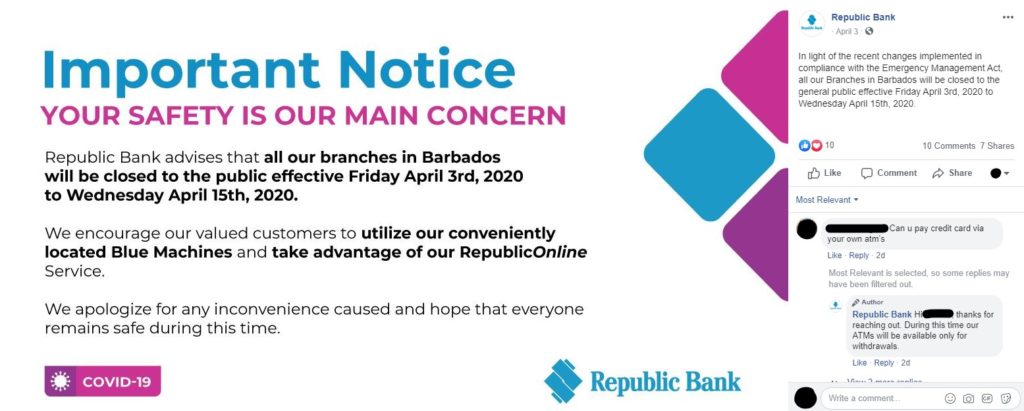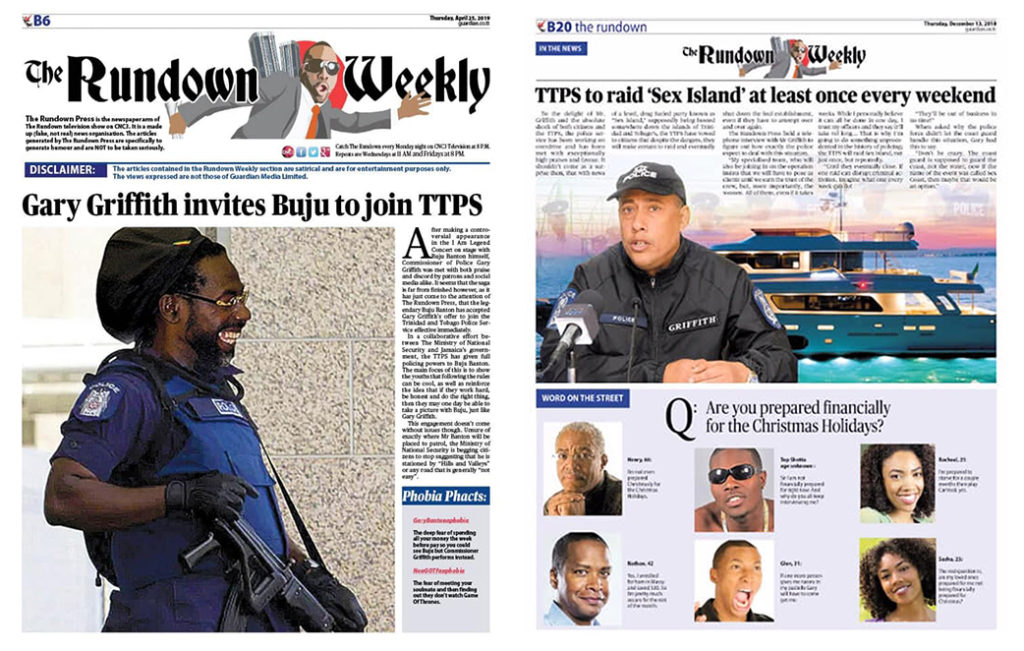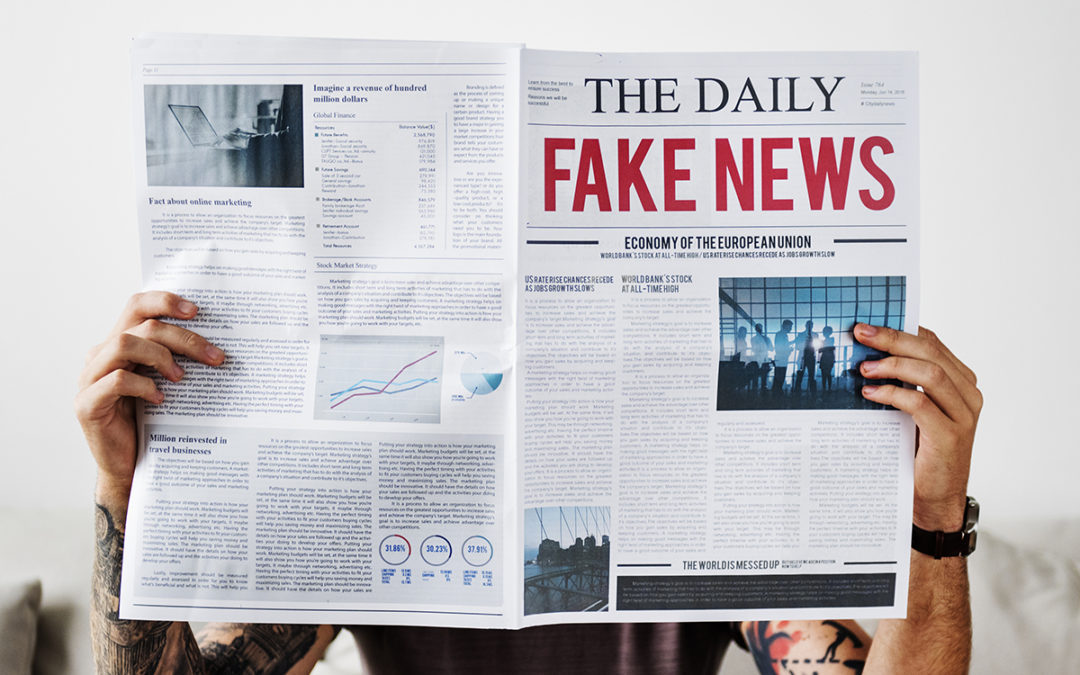Trinidad and Tobago has seen a proliferation of various forms of fake news over the last year. During the extreme dry season of 2019, WASA was subject to several viral rumours, most of which were at best inaccurate, and at worst salacious and untrue. These hoaxes are enabled by social media platforms, and as with traditional communication methods, lies are much more easily spread than the truth.
With this year being an election year, some persons expect that this trend will continue, and worsen. What no one could predict, were the global COVID-19 pandemic, and the several associated conditions which make the spread of falsities even easier than they were before.
An excellent example of this, is the (growing) belief that 5G has either created COVID-19 or, as some are espousing, it has caused the conditions which are attributed to COVID-19.
The original script of this document was written for government bodies (as I currently work within a government Every government organisation) but with every passing day, I see the value of this advice for other organisations in society. We must all be aware of the threat of fake news and its possible impact on society, through swaying wide cross sections of the public.
The word threat is deliberately used there. To quote the Secretary General of the United Nations
The spread of false information poses a threat to people’s lives, health security and to public health systems across the world. Misinformation about vaccinations, for instance, has flourished in recent years, including on social media, resulting in a rise in preventable diseases. The dissemination of inaccurate information during disease outbreaks, such as recent Ebola epidemics, also makes it harder to respond effectively to complex health crises.
António Guterres, United Nations Secretary-General’s message to High-Level Conference on “The Danger of Disinformation – Countering Fake News and Safeguarding Health in the Post-Truth Era”
To start, let us understand the different situations which can be called ‘fake news’. There are three phenomena, closely linked, which can attract the term:
1. Misinformation
Some definitions refer to misinformation as a deliberate act. This particular interpretation refers to incorrect information which may be inadvertently shared by a person who misunderstands or does not know the facts or the details of a matter.
Through the democratisation of information sharing which is a feature of the internet, often persons getting access to certain releases or other information may get partial information, misinterpret the facts or make incorrect conclusions from these facts.
For example, information shared by organisations in one country in response to national (or state or municipal) guidelines in that place (say, Place A) may end up being picked up by someone in a different jurisdiction (Place B). That person may then honestly misinterpret it as being a condition in their own jurisdiction (Place B) when it was meant for somewhere else (Place A).
This is exactly what happened recently when a Republic Bank advisory for Barbados indicating that all of their branches would be closed was shared widely in Trinidad and Tobago.

2. Disinformation
Disinformation refers specifically to false information which is purposefully shared for the purpose of deception. In some ways it is akin to the propaganda campaigns of global history which attempted to spread a particular message from some surreptitious gain.
Disinformation campaigns have become popular in ‘black hat’ communications campaigns in business, media and politics, as the internet can be used as an easy tool for propagation and anonymity. It is relatively cheap to anonymously start a website or social media profiles, and spread rumours, often contrived, for the benefit of the sharer.
These campaigns are well known to many of us when referring to the strategy behind armed conflict. Deceptive communications are a norm in those periods. One popular example from history, is the Ghost Army of the Second World War. They were a group of artists, actors and sound engineers who the Allied Forces enlisted to fool the Germans by pretending to be a real army, moving into fake combat positions.
They did this with the aid of, get this, inflatable trucks, jeeps and tanks. It is an amazing story of an elaborate disinformation campaign of WWII. PBS produced a documentary about it, and the trailer is in the video below. You can also read more at The Atlantic.
Not all disinformation campaigns are filled with memories of military strategy however. In more recent times, British authorities are currently plagued by citizens burning 5G mobile towers, because they believe that 5G causes Corona Virus/COVID-19. Some have even taken to threatening broadband engineers.
In short, disinformation can be VERY DANGEROUS to your company, brand, family or initiative.
Disinformation is the main type of content which attracts the title ‘Fake News’, and is actually the thing that attracted Donald Trump to start using the monicker, when referring to stories in the media which he wanted to counteract. Much is written about the problems of fake news and disinformation campaigns undertaken in the 2016 US election, and the way it influenced traditional media, social media, and conversations around the world. A simple internet search will procure thousands of articles, a Netflix special and even an HBO documentary.
3. Satire

As long as there is information to be shared, there will be someone making jokes about it. Humour is one of the most powerful tools for communicators of all time. As a young boy I would relish content from “Mad Magazine” when friends snuck issues into school, though to be honest, (I believe I was more interested in the cartoon caricatures than anything else – and I don’t think I understood their jokes anyway.)
Since then, with the dawn of the internet, satirical websites became an important genre among the various types of web content. “The Onion” struck their audiences with slick newsroom-esque sets and deadpan anchors who shared the most ridiculous stories, all of which were made up. A great part of their success is that their stories bear enough resemblamce reality enough to catch audiences off guard until they catch the ‘punch line’.
The challenge is, not everyone catches the punch line.
Two popular local satirical news sources are ‘Late O’Clock News’ and ‘The Rundown’, both of which have wide audiences consuming their content.
Responding to Fake News
The different types of fake news each require different responses. Due to the viral nature of the propagation of fake news, it must be noted that responses must, in addition to utilising traditional counter information mechanisms, attempt to equal the viral nature of fake news, in order to best neutralise the threat.
This means that responses must be communicated using different copy (text, images) and different methods (memes, videos, media statements) depending on the medium used (newspapers, radio, television, Facebook, Instagram etc), all in keeping with the organisation’s brand guidelines and communications policy & strategy.
Depending on the issue, the nature of the fake news and its impact, it is also important to operationalise your crisis communications strategy. This blog post does not cover crisis communications. If your organisation does not have a crisis communications plan, you should consider getting one.
With the fast-moving nature of social and political proponents of fake news, you don’t have a lot of time to figure out what to do, and to get it done. Preparation is key before, so that you can act quickly if you are hit. That said, the following list gives suggestions (in no particular order) for your response to fake news which impacts your organisation.
The Media is your Primary Partner
It goes without saying that for situations with a wide ranging impact (or for large organisations) media agencies are obvious partners in the response to any fake news.
Develop ‘Listening’ Systems
Utilising media monitors and social listening tools, it is possible to identify some trends in communication which may lead to the development of fake news, or to identify a fake news story before it reaches crisis proportions.
- Google Alerts is a freely available tool which can be used to create alerts for specific keywords, which will be delivered to an inbox at specified intervals. This service creates alerts for these keywords as soon as the Google search engine identifies them across the internet.
- There are several digital platforms which can be used for social listening which, similar to Google alerts, monitors keywords across social media platforms. You can get more information on social listening tools at Hootsuite.
Create a Rapid Response Team and Communications Mechanism
An old quote says that “Systems enable accomplishment, but only people can get things done.” It is advisable to create systems by which a ‘Rapid Response Team’ can develop counter information and get it out to the public, including identifying spokespersons, or focal points for media, including social media communication. It should be noted that this can be as simple as the creation of a Whatsapp group containing communications professionals, executive managers and select officers across key portfolios within the organisation.
Time is of the Essence
A fast response time to fake news is essential. It often spells out the difference between stomping out a small rumour before it grows or having to fix a big problem. As defined in crisis communications, it is important to publish a ‘holding statement’ where needed, at the earliest possible time. Thereafter, the organisation can develop a more detailed response.
If it is possible to immediately clarify the organisation’s position, the first publication of a response should occur within that first hour, while being careful to ensure that the response is accurate, as detailed as required, and very importantly, is believable (and verifiable).
Use Digital Media Content Extensively
Social Media platforms each have separate types of audiences and different characteristics to viral content.
While viral content on Facebook are most often videos and images, on Linkedin it is more often images with professional aesthetics, accompanied by level-headed and information rich text. On Twitter, succinct text which points to an article/blog post with more information always performs well.
Organisational websites should be used to publish holding and detailed statements. Do not upload pdf documents with the expectation that people will download and read them. Most internet users browse the web on mobile devices, so placing the text itself on the page is most effective.
If you’d like, you can add a jpg image version of your response on a letterhead, and maybe even add a download link to a pdf – once you have text which persons can read in the first place.
Optimise Responses for SEO
Search Engine Optimisation (SEO) helps search engines to find your web content, and to make it turn up in appropriate web searches. This plays an important role in perpetuation of counter information after the initial outbreak.
Persons discovering fake news may not always be able to quickly find your corrections or counter information. Some of these persons may turn to search engines to verify their information, and your response needs to be in the first few results they see.
It is also important to note that fake news is not solely a present phenomenon. It is highly repeatable. Very often old fake news is revitalised by an errant actor, or inadvertently when a person may stumble upon an old meme, video or article.
Facebook’s ‘Memories’ application reminds their users of posts from years gone by. This makes an excellent opportunity to revive the fake news you thought you put to bed.
The responses to propaganda must be as easily discoverable to ensure that it can cater to both the current and future problems which they may pose.

